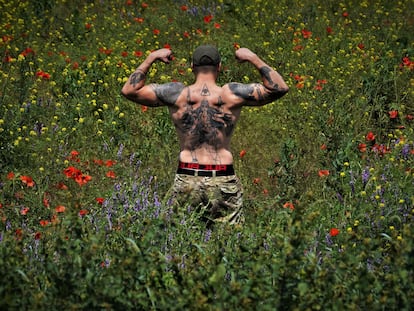The dilemma of Ukraine’s accession and other keys to a NATO summit near Russia
The Allies will meet in Lithuania in a bid to send the Kremlin a resounding messages of unity and strength
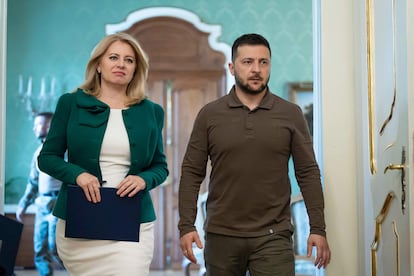
NATO allies are planning to hold a summit on Tuesday and Wednesday in Vilnius, Lithuania. From that symbolic location on the Alliance’s eastern flank, it will seek to send a new message of unity and strength to the Kremlin. The central issue on the agenda will be to find a political agreement on the future of Ukraine, to outline what a hypothetical path to membership might look like, and to offer security guarantees against a new invasion after the war ends. Other important issues the meeting will have to tackle are the situation of Sweden, whose membership remains blocked by Turkey, the launch of renewed regional defense plans, which will entail the biggest restructuring of the Alliance since the Cold War, and an effort to outline new spending policies.
The 31 Allies (following Finland’s recent accession) will meet, amid important security measures, just a few dozen kilometers from Belarus — an ally of the Kremlin that has agreed to host Wagner’s mercenary troops as well as Russian nuclear bombs —, less than 130 miles from the Russian enclave of Kaliningrad and under 190 miles from the main body of Russian territory. This is the fourth NATO summit following the Russian invasion of Ukraine; in addition to the Swedish Prime Minister, Ulf Kristensson, and, predictably, Ukrainian President Volodymyr Zelenskiy, the Allies will be accompanied by the leaders of four Pacific area democracies: Japan, South Korea, Australia and New Zealand. This is a reminder that if NATO’s central focus is on Russia, China has also clearly entered the radar.
There is no shortage of discrepancies and friction between the Allies, but there are also many elements that indicate that the Russian aggression has breathed new life into the world’s largest security organization. Below are the key issues of the summit:
The future of Ukraine
The relationship model between NATO and Ukraine will be the focus of a large part of the debates at the Vilnius summit. The military organization extended Ukraine an invitation to join, along with Georgia, at the Bucharest summit in 2008, but since then — and despite propaganda by the Kremlin, which has justified the war on the claim of the Alliance’s alleged expansion eastwards — hardly anything had changed until the full-scale invasion. Now, it has been agreed to elevate the diplomatic relationship with Ukraine by transforming the NATO-Ukraine Commission into a NATO-Ukraine Council, with more power of representation and which will allow the Kyiv government to sit alongside the Allies on equal terms on many issues. The first of these meetings will be held in Vilnius, where a strongly symbolic statement is expected to stress that Ukraine’s place is in NATO. Some Allies want stronger language and even a timetable or some signal that Kyiv will not need to follow the Membership Action Plan (MAP).
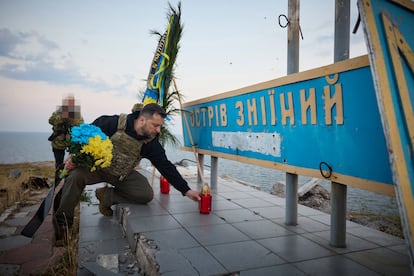
Ukraine has already assumed that its membership will not be taking place until the war is over, but even then it would not be automatic and the country would have to meet the organization’s standards, which entail a massive shift in its military structures from Soviet to NATO doctrine, said Allied sources. Meanwhile, the Alliance is set to approve an economic assistance package for several years to ensure material, training and help with the restructuring.
Kyiv wants the Alliance, or rather, some of the Allies, to offer “security guarantees.” However, neither NATO nor its members want to provide Ukraine with a binding “security guarantee” that could sound like Article 5 of the Alliance, which defines mutual defense and could drag NATO into the war. A group of allied countries that includes the United States, Germany, France and the United Kingdom are finalizing an offer for a “security commitment” or some type of “security protection” that falls short of mutual defense. Rather, through bilateral or group political agreements, it seeks to keep arms and support flowing to create such a shield for Ukraine that it will become undesirable to attack it. These commitments would include the supply of weapons, military training, intelligence sharing and technology transfer, as EL PAÍS reported earlier.
Swedish accession
The completion of Sweden’s accession is one of the main issues on the NATO agenda. After the Russian invasion of Ukraine, both Stockholm and Helsinki decided to reverse a long history of military non-alignment and request integration into the Alliance. In the case of Sweden, it signals a change in a course maintained for two centuries. But if Finland has already been able to enter, Sweden has not due to a refusal by Turkey and Hungary, although the main political hurdle is Ankara.
Membership requires the unanimous approval of all the Allies. Turkey claims that Stockholm has not done enough to fight terrorism, and accuses the country of an alleged tolerance towards the PKK (Kurdish Workers’ Party), considered a terrorist organization by the EU, among others. Another element of friction was an embargo on arms sales to Turkey decided by Sweden and Finland in 2019, after a Turkish incursion into Syria against the Syrian Kurdish YPG militias.
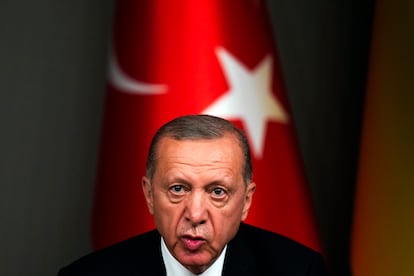
The embargo was lifted in September of last year. Sweden has passed new anti-terrorism legislation. This same week, a Swedish court sentenced a man for attempting to finance the PKK, a judicial fact that has been considered a useful element in the dispute with Ankara. The Swedish press reports that Stockholm is also considering reforms to the law to allow the police to stop anyone from burning copies of the Koran.
In diplomatic moves leading up to the summit, however, Turkey has not lifted the blockade, arguing that while Sweden has taken steps in the right direction, practical implementation remains to be seen. This overlaps with other issues. Turkey has long pushed for advanced U.S.-produced weaponry, especially to modernize its existing F-16 fighter jets and purchase of new ones. The White House approved a sales package for F-16 upgrade software after Turkey gave the green light for Finland’s entry, but the matter got bogged down in Congress. The parties maintain that the issues are separate from the accession negotiations, but many experts see a link between the two.
The pressure from the Allies on Turkey to grant approval is very high. The accession of Sweden would represent a new blow for Putin. The Lithuanian summit will provide clues.
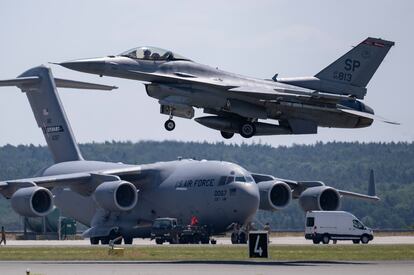
Regional plans
NATO has embarked on what it considers its biggest reorganization since the Cold War in the form of comprehensive regional defense plans, divided into three geographical areas, which seek to deal with the main threats to the Alliance: Russia and terrorism. The new plans also cover five domains of eventual threats and attacks: air, land, maritime, space and cyber. They are fundamentally based on deterrence.
The architecture of the new model has been under design since 2018, four years after the invasion of Crimea and the illegal annexation of the Ukrainian peninsula by Russia, but it has gained further momentum with the large-scale invasion. The war in Europe has made visible the need for new strategies and these plans, set out in more than 4,000 secret pages, are the most important item of the meeting, according to Allied sources.
The new plans imply a greater spending commitment. They will set priorities for acquisitions and investments, as well as create a model to align supply and demand with lessons learned from Russia’s war in Ukraine and amid a European push to revitalize its defense industry and address huge shortages of ammunition in its arsenals.

Military spending
The question of Allied military spending is another important issue on the table at the Lithuanian summit. NATO members agreed in 2014 to meet the goal of investing 2% of gross domestic product (GDP) in defense within a decade. The trajectory of many of the Allies was a long way from that goal, causing great frustration in the U.S., the mainstay of the Alliance. But the Russian invasion of Ukraine triggered a change in dynamics.
Diplomatic sources quoted by Reuters indicate that there is an agreement for the summit to affirm a “lasting commitment to invest at least 2% of GDP” in defense, thus making the figure no longer an arrival target, but a minimum requirement.
Data provided by the Alliance indicates that this year only 11 of the 31 member countries will meet the 2% target: the U.S., the U.K., Poland, Greece, Estonia, Lithuania, Finland, Romania, Hungary, Latvia and Slovakia.
However, public opinion is now more open to the security argument, and NATO members are almost all embarking on paths of increased spending. The great challenge will be to make it efficient, achieving a high level of interoperability, economies of scale, avoiding duplication and overcoming deficiencies.
Sign up for our weekly newsletter to get more English-language news coverage from EL PAÍS USA Edition
Tu suscripción se está usando en otro dispositivo
¿Quieres añadir otro usuario a tu suscripción?
Si continúas leyendo en este dispositivo, no se podrá leer en el otro.
FlechaTu suscripción se está usando en otro dispositivo y solo puedes acceder a EL PAÍS desde un dispositivo a la vez.
Si quieres compartir tu cuenta, cambia tu suscripción a la modalidad Premium, así podrás añadir otro usuario. Cada uno accederá con su propia cuenta de email, lo que os permitirá personalizar vuestra experiencia en EL PAÍS.
¿Tienes una suscripción de empresa? Accede aquí para contratar más cuentas.
En el caso de no saber quién está usando tu cuenta, te recomendamos cambiar tu contraseña aquí.
Si decides continuar compartiendo tu cuenta, este mensaje se mostrará en tu dispositivo y en el de la otra persona que está usando tu cuenta de forma indefinida, afectando a tu experiencia de lectura. Puedes consultar aquí los términos y condiciones de la suscripción digital.
More information
Archived In
Últimas noticias
There is as much life left to discover on planet Earth as that which is already known
Dozens presumed dead, around 100 injured in fire at Swiss Alps bar during New Year’s celebration
Is porn for women different from conventional porn? We spoke to those who make it
Cartagena de Indias is sinking: What can the city do to mitigate it?
Most viewed
- Sinaloa Cartel war is taking its toll on Los Chapitos
- Reinhard Genzel, Nobel laureate in physics: ‘One-minute videos will never give you the truth’
- David King, chemist: ‘There are scientists studying how to cool the planet; nobody should stop these experiments from happening’
- Oona Chaplin: ‘I told James Cameron that I was living in a treehouse and starting a permaculture project with a friend’
- The Interoceanic Train, the Mexican alternative to the Panama Canal

